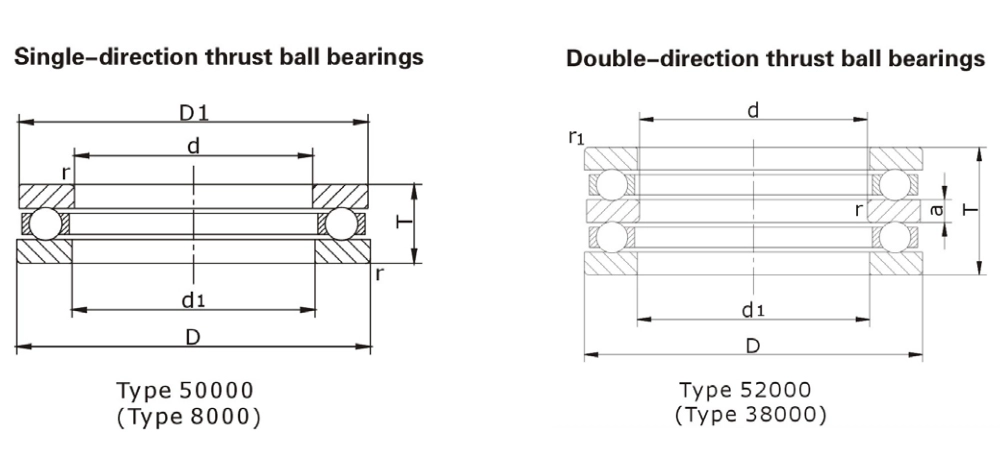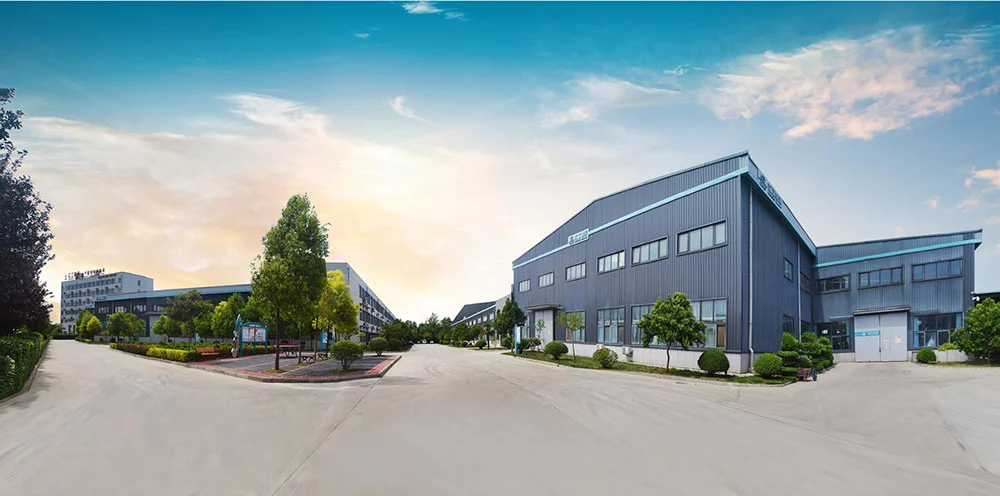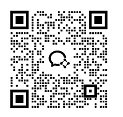What is a Thrust Ball Bearing?
Thrust ball bearings are a crucial component in many mechanical systems, designed to handle axial loads or forces parallel to the shaft. These specialized bearings consist of ball bearings sandwiched between two raceways, allowing for smooth rotation while efficiently managing thrust loads. Commonly used in various applications across industries, thrust ball bearings play a vital role in reducing friction and supporting axial loads in machinery, vehicles, and industrial equipment.

How do thrust ball bearings work?
Thrust ball bearings operate on a simple yet effective principle. The bearing consists of a series of hardened steel balls positioned between two flat rings called races or washers. As axial force is applied, the balls roll between these races, distributing the load evenly across their surface area. This design allows for smooth rotation while effectively managing thrust loads.
The key to the bearing's functionality lies in its ability to convert sliding friction into rolling friction. When a shaft or component exerts an axial force on the bearing, instead of the surfaces grinding against each other, the balls roll within the raceways. This rolling action significantly reduces friction, heat generation, and wear, resulting in improved efficiency and longevity of the mechanical system.
The raceways in thrust ball bearings are typically made from high-quality, heat-treated steel to ensure durability and resistance to wear. The balls themselves are precisely manufactured to maintain uniform size and shape, crucial for even load distribution and smooth operation. Some advanced designs incorporate cages or retainers to keep the balls evenly spaced, further enhancing performance and reducing noise.
One of the primary advantages of thrust ball bearings is their ability to handle high axial loads while allowing for high rotational speeds. This makes them ideal for applications where significant thrust forces are present, such as in automotive clutch release mechanisms, machine tool spindles, and propeller shaft supports in marine applications.
However, it's important to note that thrust ball bearings are primarily designed to handle axial loads in one direction. While some designs can accommodate limited bi-directional thrust, they are most effective when the primary load is applied in a single direction. For applications requiring significant bi-directional thrust capacity, other bearing types such as double-direction thrust ball bearings or thrust roller bearings may be more suitable.
Proper lubrication is crucial for the optimal performance and longevity of thrust ball bearings. The lubricant helps reduce friction between the balls and raceways, dissipates heat, and protects against corrosion. The choice of lubricant depends on factors such as operating speed, load, temperature, and environmental conditions.
What are the advantages of using thrust ball bearings?
Thrust ball bearings offer numerous advantages that make them an essential component in many mechanical systems across various industries. Their unique design and capabilities provide several benefits that contribute to improved performance, efficiency, and longevity of machinery and equipment.
One of the primary advantages of thrust ball bearings is their exceptional ability to handle high axial loads while maintaining low friction. This characteristic makes them ideal for applications where significant thrust forces are present, such as in automotive transmissions, machine tool spindles, and marine propeller shafts. The ball bearing design allows for the efficient distribution of axial loads across multiple contact points, reducing stress on individual components and extending the overall lifespan of the bearing.
Another significant advantage is the high-speed capability of thrust ball bearings. The rolling action of the balls between the raceways allows for smooth rotation at high speeds with minimal friction. This feature is particularly beneficial in applications such as high-speed pumps, turbines, and centrifuges, where maintaining efficiency at elevated rotational velocities is crucial.
Thrust ball bearings also excel in terms of space efficiency. Their compact design allows for the management of substantial axial loads within a relatively small footprint. This characteristic is particularly valuable in applications where space is at a premium, such as in automotive engines or aerospace equipment. The ability to handle high loads in a compact package enables engineers to design more efficient and space-saving mechanical systems.
Furthermore, thrust ball bearings offer excellent precision and accuracy in maintaining axial positioning. The even distribution of load across the bearing surface helps minimize shaft deflection and maintains proper alignment. This precision is critical in applications such as machine tools, where accuracy directly impacts the quality of the finished product.
The versatility of thrust ball bearings is another advantage worth noting. They can be used in a wide range of operating conditions, including varying temperatures and environments. With proper material selection and lubrication, thrust ball bearings can perform reliably in applications ranging from cryogenic temperatures to high-heat environments.
Maintenance requirements for thrust ball bearings are generally low compared to some other bearing types. When properly installed and lubricated, they can operate for extended periods with minimal intervention. This low-maintenance characteristic contributes to reduced downtime and lower overall operating costs for machinery and equipment.
Thrust ball bearings also offer good resistance to shock loads and vibration. The multiple contact points provided by the balls help absorb and distribute sudden impacts, protecting the bearing and the connected components from damage. This resilience is particularly beneficial in applications subject to variable or unpredictable loading conditions.
The energy efficiency of thrust ball bearings is another significant advantage. By converting sliding friction into rolling friction, these bearings dramatically reduce energy losses due to friction. This efficiency translates into lower power consumption, reduced heat generation, and improved overall system performance.
Lastly, the wide availability and standardization of thrust ball bearings contribute to their popularity. They are produced by numerous manufacturers worldwide, ensuring a stable supply chain and competitive pricing. The standardization of sizes and specifications also simplifies the selection and replacement process, making them a convenient choice for many engineering applications.
What are common applications for thrust ball bearings?
Thrust ball bearings find widespread use across numerous industries due to their unique ability to handle axial loads efficiently. Their versatility and performance characteristics make them indispensable in a wide array of applications, ranging from everyday consumer products to complex industrial machinery.
In the automotive industry, thrust ball bearings play a crucial role in various components. They are commonly found in clutch release mechanisms, where they help manage the axial forces involved in engaging and disengaging the clutch. Thrust ball bearings are also used in automotive transmissions, particularly in the planetary gear sets of automatic transmissions. Here, they support the axial loads generated during gear shifts and help maintain proper alignment of transmission components. Additionally, these bearings are often employed in steering columns to support the weight of the steering wheel and absorb axial forces from road impacts.
The aerospace sector relies heavily on thrust ball bearings for numerous applications. In aircraft engines, these bearings are used to support the thrust of propeller shafts and manage the axial loads in turbine engines. They are also found in landing gear assemblies, where they help absorb the significant axial forces experienced during takeoff and landing. Thrust ball bearings are crucial in helicopter rotor systems, supporting the main rotor's thrust and allowing for smooth rotation.
In the marine industry, thrust ball bearings are essential components in propeller shaft systems. They support the enormous axial loads generated by propellers, particularly in large ships and submarines. These bearings help maintain proper shaft alignment and contribute to the overall efficiency of marine propulsion systems.
The manufacturing and machine tool industry extensively uses thrust ball bearings in various equipment. They are commonly found in the spindles of lathes, milling machines, and grinding machines, where they support the axial loads generated during cutting operations while allowing for high-speed rotation. Thrust ball bearings are also used in industrial pumps, particularly in vertical pump configurations, where they support the weight of the pump shaft and impeller.
In the energy sector, thrust ball bearings play a vital role in both conventional and renewable energy systems. In wind turbines, these bearings are used in the blade pitch control mechanisms and in the main shaft support. In hydroelectric power plants, thrust ball bearings support the enormous axial loads generated by water turbines. They are also found in steam and gas turbines used in thermal power plants, supporting the axial thrust of the turbine rotors.
The construction and mining industries utilize thrust ball bearings in various heavy machinery. Excavators, bulldozers, and cranes often employ these bearings in their swing mechanisms and boom support systems. In tunnel boring machines, thrust ball bearings help manage the significant axial forces encountered during drilling operations.
Consumer appliances also benefit from the use of thrust ball bearings. They are commonly found in washing machines, supporting the drum and managing the axial loads during spin cycles. In ceiling fans, thrust ball bearings support the weight of the fan blades and allow for smooth rotation.
In the field of robotics and automation, thrust ball bearings are used in robotic arm joints and linear actuators. They help manage the axial loads encountered during robotic movements while maintaining precision and allowing for smooth operation.
The pharmaceutical and food processing industries use thrust ball bearings in various equipment such as mixers, blenders, and centrifuges. In these applications, the bearings support axial loads while allowing for high-speed rotation, crucial for efficient mixing and separation processes.
Lastly, thrust ball bearings find applications in scientific instruments and precision equipment. They are used in optical systems, such as telescopes and microscopes, where they support moving components while maintaining precise alignment. In measurement instruments like coordinate measuring machines, thrust ball bearings contribute to the accuracy and repeatability of measurements by providing smooth, low-friction movement.
Conclusion
Thrust ball bearings are a fundamental component in modern mechanical engineering, offering unique advantages in managing axial loads across a wide range of applications. Their ability to handle high thrust forces while maintaining low friction and allowing for high-speed rotation makes them indispensable in numerous industries. From automotive and aerospace to manufacturing and energy production, thrust ball bearings continue to play a crucial role in improving the efficiency, performance, and reliability of machinery and equipment.

Luoyang Huigong Bearing Technology Co., Ltd. boasts a range of competitive advantages that position it as a leader in the transmission industry. Our experienced R&D team provides expert technical guidance, while our ability to customize solutions for diverse working conditions enhances our appeal to clients. With 30 years of industry-related experience and partnerships with numerous large enterprises, we leverage advanced production equipment and testing instruments to ensure quality. Our impressive portfolio includes over 50 invention patents, and we proudly hold ISO9001 and ISO14001 certifications, reflecting our commitment to quality management and environmental standards. Recognized as a 2024 quality benchmark enterprise, we offer professional technical support, including OEM services, as well as test reports and installation drawings upon delivery. Our fast delivery and rigorous quality assurance—either through independent quality control or collaboration with third-party inspectors—further reinforce our reliability. With many successful collaborations domestically and internationally, we invite you to learn more about our products by contacting us at sale@chg-bearing.com or calling our hotline at +86-0379-65793878.
References
1. SKF Group. (2024). Thrust ball bearings.
2. NSK Ltd. (2023). Thrust Ball Bearings.
3. Schaeffler Technologies AG & Co. KG. (2024). Axial deep groove ball bearings.
4. Timken Company. (2023). Thrust Ball Bearings.
5. NTN Corporation. (2024). Thrust Ball Bearings.
6. Machine Design. (2022). What are Thrust Bearings?
7. Thomas Industry Update. (2023). The Thrust Bearing: A Comprehensive Guide.
8. Engineering360. (2024). Thrust Bearings Information.
9. Bearing Tips. (2023). What are thrust bearings?
10. American Bearing Manufacturers Association. (2024). Thrust Bearings.

